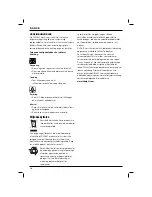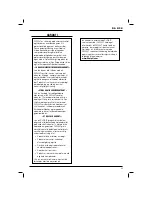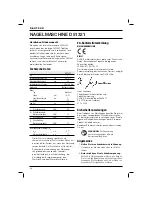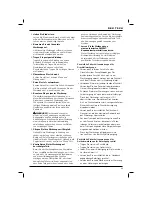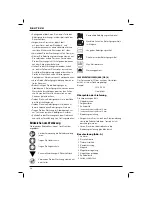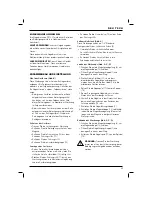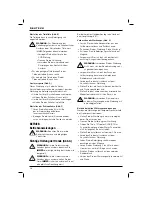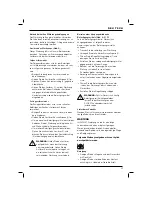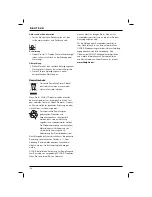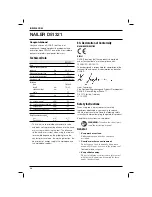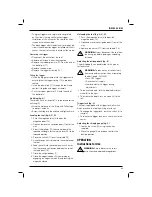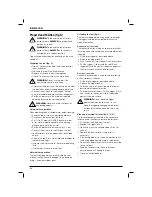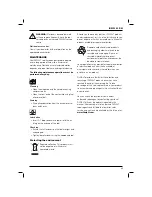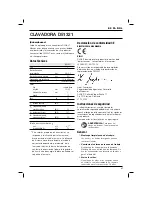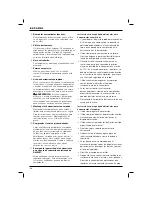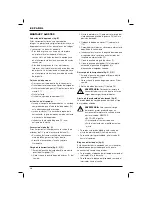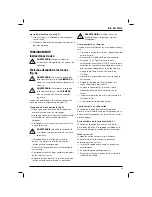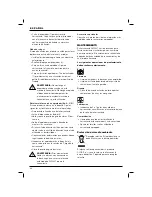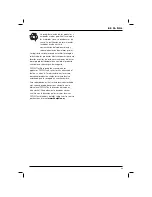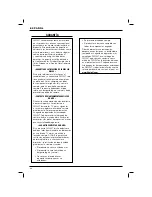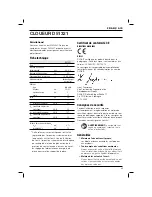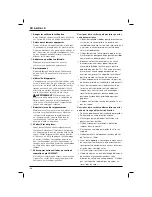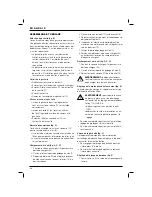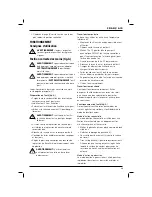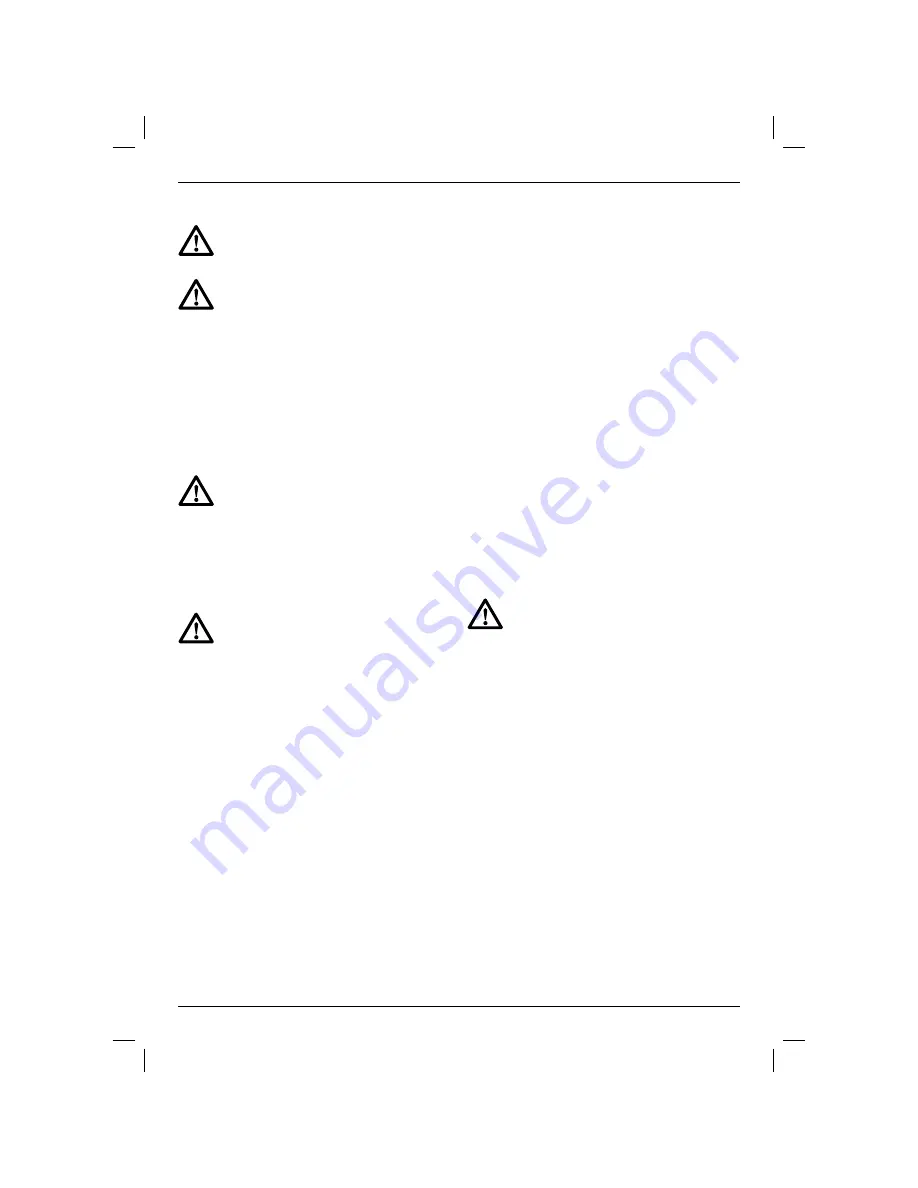
24
E N G L I S H
Proper Hand Position (fi g. G)
WARNING:
To reduce the risk of serious
personal injury,
ALWAYS
use proper hand
position as shown.
WARNING:
To reduce the risk of serious
personal injury,
ALWAYS
hold securely in
anticipation of a sudden reaction.
Proper hand position requires one hand on the main
handle (21).
Preparing the tool (fi g. A)
• Drain all condensation from the air compressor
tanks and hoses.
• Lubricate the tool. See “Maintenance”.
• Remove all fasteners from the magazine.
• Check if the contact trip (4) can move freely.
WARNING:
Do not use the tool if the
contact trip cannot move freely.
• Check that the pressure of the air supply is below
the maximum recommended operating pressure.
• Connect the air hose to the fi tting on the tool.
• Check for audible leaks around valves and gaskets.
• Set the air pressure to the minimum required
operating pressure for your application.
WARNING:
Never use a tool that leaks or
has damaged parts.
Cold weather operation
When operating tools at temperatures below freezing:
• Keep the tool as warm as possible before use.
• Disconnect the airline from the tool.
• Put 10 to 15 drops of D
E
WALT pneumatic tool
oil (or winter-weight pneumatic oil containing
ethylene glycol) into the air inlet.
• Set the air pressure to a maximum of 5.5 bar.
• Connect the air hose to the fi tting on the tool.
• Load fasteners into the magazine as described
above.
• Actuate the tool 5 or 6 times into scrap lumber to
lubricate the o-rings.
• Increase the air pressure to the normal operating
level.
• Use the tool in the normal manner.
Hot weather operation
The tool should operate normally. Avoid the heat
of direct sunlight to avoid damage to the bumpers,
o-rings, and other rubber parts.
Actuating the tool (fi g. A)
The tool can be operated using one of two modes.
The trigger installed on the tool determines the
mode of actuation.
Sequential action mode
The sequential action mode is used for intermittent
fastening when very careful and accurate placement
is desired.
• Fit the grey trigger as described above.
• Release the trigger lock (2).
• Push the contact trip (4) against the work surface.
• Pull the trigger (1) to actuate the tool. Each
trigger pull with the contact trip pushed against
the work surface will drive one fastener.
Bump action mode
The bump action mode is used for rapid fastening
on fl at, stationary surfaces.
• Fit the black trigger as described above.
• Release the trigger lock (2).
• To drive a single fastener: Operate the tool as
described for sequential action.
• To drive several fasteners: Pull the trigger (1) fi rst,
and then push the contact trip (4) repeatedly
against the work surface.
WARNING:
Do not keep the trigger
depressed when the tool is not in use.
Keep the trigger lock engaged to prevent
accidental actuation when the tool is not
in use.
Clearing a jammed fastener (fi g. A, C, D)
If a fastener becomes jammed in the nosepiece,
follow these instructions to remove the fastener:
• Disconnect the airline from the tool.
• Engage the trigger lock (2).
• Open and move the nail guide door (7) out of
the way.
• Remove the bent fastener, using pliers if
necessary.
• If the driving blade is in the down position, push
the driving blade upward using a screwdriver.
• Correct any deformation that may have occurred
to the nail coil.
• Feed the fasteners into the nose piece as
described under “Loading the tool”.
• Close the nail guide door.
Summary of Contents for D51321
Page 1: ...1 D51321 www eu ...
Page 3: ...1 A 4 7 6 5 8 1 2 9 3 20 ...
Page 4: ...2 7 15 14 16 6 10 11 13 12 B C ...
Page 5: ...3 3 22 8 19 18 17 D E F ...
Page 6: ...4 G 21 ...

